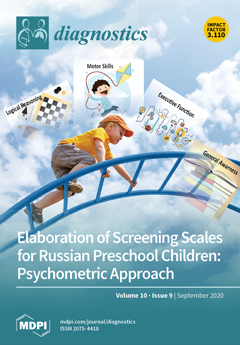The aim of the present study is to evaluate the intra- and inter-observer agreement in assessing the renal function by means of
99mTc-MAG3 diuretic renography. One hundred and twenty adults were enrolled in the study. One experienced and one junior radiographer processed the renograms twice by assigning manual and semi-automated regions of interest. The differential renal function (DRF, %), time to maximum counts for the right and left kidney (T
maxR-T
maxL, min) and time to half-peak counts (T
1/2, min) were calculated. The Bland–Altman analysis (bias±95% limits of agreement), Lin’s concordance correlation coefficient and weighted Fleiss’ kappa coefficient were used to assess agreement. Based on the Bland–Altman analysis, the intra-observer repeatability results for the experienced radiographer using the manual and the semi-automated techniques were 0.2 ± 2.6% and 0.3 ± 6.4% (DRF), respectively, −0.01 ± 0.24 and 0.00 ± 0.34 (T
maxR), respectively, and 0.00 ± 0.26 and 0.00 ± 0.33 (T
maxL), respectively. For the junior radiographer, the respective results were 0.5 ± 5.0% and 0.8 ± 9.4% (DRF), 0.00 ± 0.44 and 0.01 ± 0.28 (T
maxR), and 0.01 ± 0.28 and −0.02 ± 0.44 (T
maxL). The inter-observer repeatability for the manual method was 0.6 ± 5.0% (DRF), −0.10 ± 0.42 (T
maxR) and −0.05 ± 0.38 (T
maxL), and for the semi-automated method −0.2 ± 9.1% (DRF), 0.00 ± 0.31 (T
maxR) and −0.05 ± 0.40 (T
maxL). The weighted Fleiss’ kappa coefficient for the T
1/2 assessments ranged between 0.85–0.97 for both intra- and inter-observer repeatability with both methods. These findings suggest a very good repeatability in DRF assessment with the manual method—especially for the experienced observer—but a less good repeatability with the semi-automated approach. The calculation of T
max was also operator-dependent. We conclude that reader experience is important in the calculation of renal parameters. We therefore encourage reader training in renal scintigraphy. Moreover, the manual tool seems to perform better than the semi-automated tool. Thus, we encourage cautious use of automated tools and adjunct validation by manual methods where possible.
Full article






